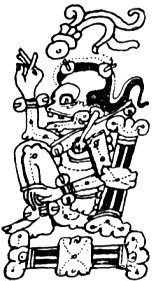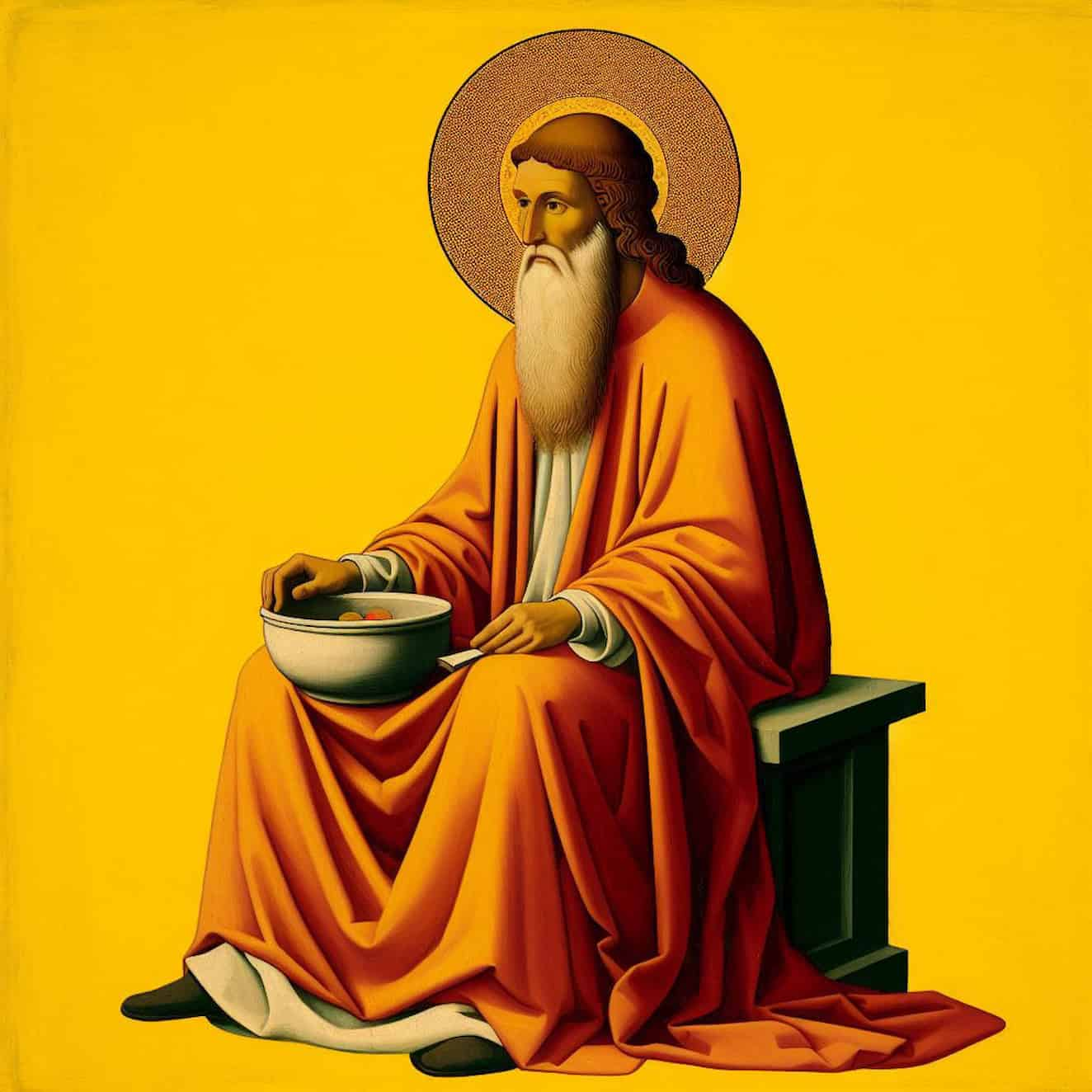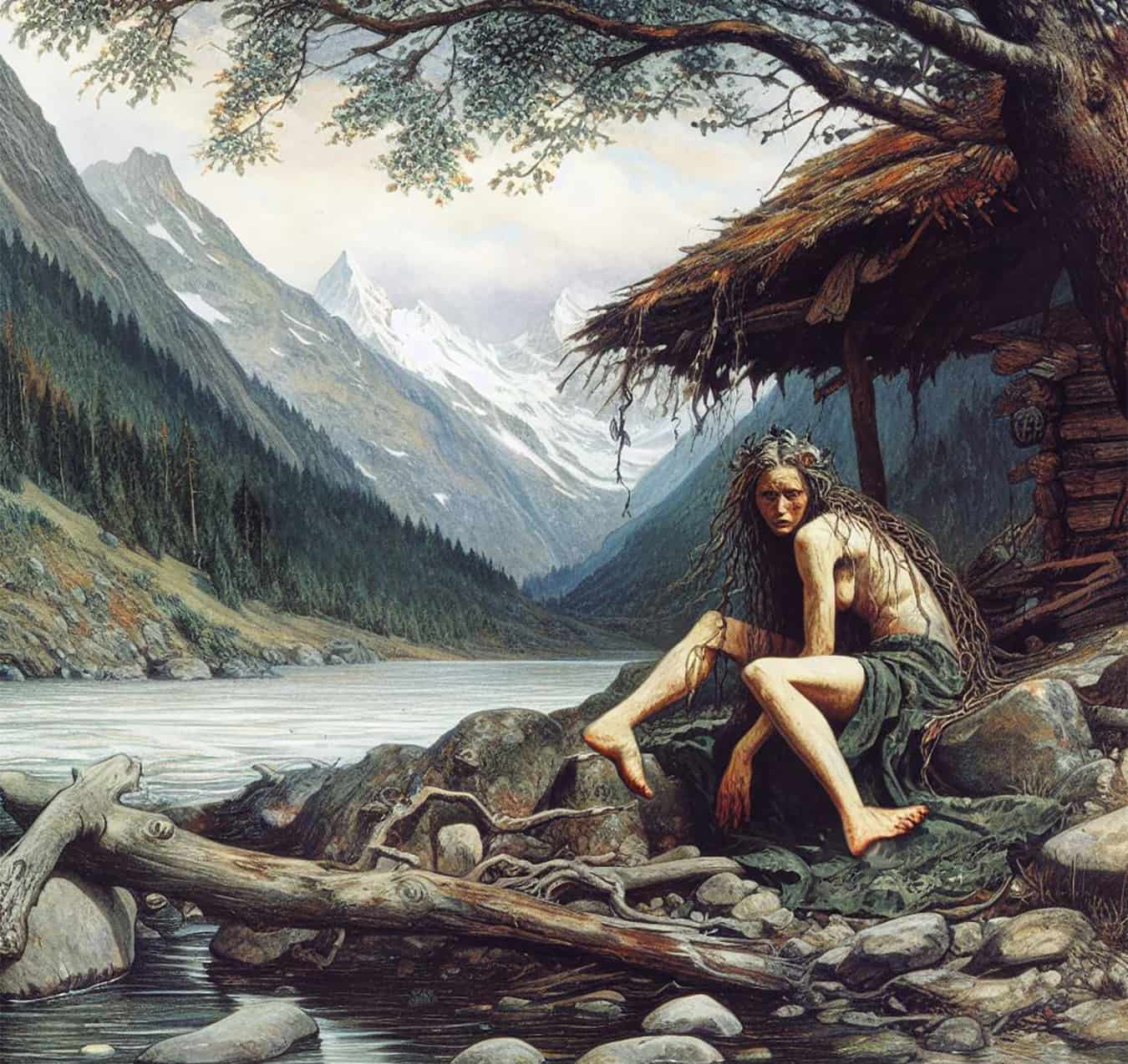Xibalba (freely translated as “Place of Fear”) – the underworld in Mayan mythology, ruled by spirits of diseases and death. Traditionally, the entrance to Xibalba was located in a cave near Cobán in Guatemala. According to some K’iche’, who are descendants of the Maya, this region is still associated with death. Another place that is sometimes given as an entrance to the underworld is the cave system in Belize. Yet another physical entrance to Xibalba is, according to the K’iche’, a dark crevice visible in the Milky Way.
Inhabitants
Xibalba is described in the Popol Vuh as a place located beneath the surface of the Earth. It is unclear whether its inhabitants are the souls of ancestors or a separate kind of beings who worship death. They were superhuman entities, but without the status of gods. Like humans, they felt pain and thirst, joy and sadness; they lived and worked like humans. They also made sacrifices by decapitating or tearing out hearts. They differed from humans only in their zoomorphic appearance, especially their faces, which inspired terror. They incited evil, sin, and discord. The elite of Xibalba consisted of twelve superhuman beings paired up. Their names expressed the roles they played in the underworld.

They were:
- Hun-Came (“One-Death”) and Vucub-Came (“Seven-Death”) – the most important judges of the realm;
- Xiquiripat (“Blood Gatherer”) and Cuchumaquic (“Gatherer of Souls”) – made blood flow from people;
- Ahalpuh (“Pus Maker”) and Ahalgana (“Bile Producer”) – caused swelling and pus in people, turning their faces yellow;
- Chamiabac (“Leg Breaker”) and Chamiaholom (“Skull Breaker”) – acted as guards in Xibalba, holding wooden clubs; they caused people to become emaciated until only skeletons and naked skulls remained, and then took their victims to starve to death;
- Ahalmez (“Maker of Filth”) and Ahaltocob (“Causer of Suffering”, “Pus Maker”, “Bringer of Misery”) – brought misfortune to people returning home or near their homes. These people were found wounded or dead, lying on the ground with their faces turned upward;
- Xic (“Vulture”) and Patan – responsible for the sudden death of travelers. They would pounce on travelers, squeezing their throats and chests so that blood would rise to the victim’s mouth, causing people to die on the roads while traveling, vomiting blood.

The lords of Xibalba were served by four gods – messengers in the form of owls generally called Ahpop Achich. These were Caquix-Tucur (“Owl Parrot”), Chabi-Tucur (“Arrow Owl”), Holom-Tucur (“Head Owl”), and Huracan-Tucur (“One-Legged Owl”). In addition to them, there were two other owls serving as guardians of flower gardens, sitting on tree branches – Ixpurpuvec and Puhuyu. According to legend, once they failed to fulfill their assigned task – they did not guard the flowers, for which they were punished: their mouths were torn, so owls today have broken noses.
Other figures of the underworld included: the zoomorphic figure – Camazotz (“Bat-Death”), two seers – Xulu (“Seer”) and Pacam (“Dignified”), and Ixguc (“Blood Woman”). These inhabitants often visited the Earth. The underworld was also visited by humans, but such expeditions usually ended unfavorably for them.
Structure
Xibalba was a vast realm or a huge city with many buildings of various purposes. The most important of them were: the rulers’ residence, five or six houses used for tests, and a ball court. Also mentioned were the rulers’ houses of Xibalba, gardens, and other facilities.
In the realm (or on its outskirts) there were rivers, gorges, cliffs, trees, and other plants, animals, roads, houses, temples, and even a pelota court. Flowers of yellow, red, blue, and white colors grew in the gardens (this referred to the colors of the four cardinal directions). Xibalba was of considerable size, and a certain number of its individual structures and locations were described or at least mentioned in the Popol Vuh.
The entrance to Xibalba was near a pelota court called Nim-Xob Carchah. This road led down steep steps to a river flowing in gorges called Nu Zivan Cul (“Tight Gorge”) and Cuzivan (“Narrow and Steep Gorge”). Upon arriving at this place, one crossed a river (another version speaks of passing between birds called Molay), a river of pus secretion (decay), and a river of blood. The deceased had to pass through them without drinking a drop or touching their waters if they did not want to succumb to the lords of Xibalba. At the end, there was a crossroads – red, black, white, and yellow (sometimes green). The black road leading westward directed travelers to their destination. In Xibalba, the newcomer reported to the Hall of Ceremonies, where the gods’ meetings took place. Here, he was subjected to cunning tests, e.g., he greeted wooden effigies imitating Hun-Came and Vucub-Came, becoming an object of ridicule, or sat on a bench, which was actually a hot stone. The lords of Xibalba played with human suffering in this way before sending the person to one of the tests.
Xibalba had many chambers where deceased souls were tortured, including:
- Quequma-ha (“Dark House”), where there was nothing but darkness,
- Xuxulim-ha (“House Where Everyone Trembled”), filled with hail and where a freezing wind blew,
- Balami-ha (“Jaguar House”), where enclosed jaguars dwelled,
- Zotzi-ha (“Bat House”), full of squeaking and flapping bats,
- Chayim-ha (“Blade House”), where sharp blades clashed.
The purpose of all these tests was both to kill and to humiliate the person beforehand. All the rooms were associated with the directions of the world.
In another part of the Popol Vuh, the sixth house, the House of Fire, full of fire and heat, is mentioned.
The Fall of Xibalba
Xibalba was the place where there was a court, on which the mythical Twins – heroes of the Popol Vuh – fell into the trap of participating in a deadly game, in which they avenged their parents (also a pair of twins), outsmarted the inhabitants of Xibalba, and brought about its downfall.
According to the Popol Vuh, the rulers of Xibalba enjoyed the reverence given to them on the surface of the Earth, a cult that involved human sacrifices to the gods of death. However, during the time period described in the Popol Vuh, the rulers of Xibalba were deceived by feigned sacrifices and suffered, receiving too few of them. Anthropologist Dennis Tedlock speculated that this may be only a slander of the Maya by the K’iche.
The role of Xibalba and its rulers after the great defeat at the hands of the heroic twins remains unclear, but it seems that it continued to fulfill its previous functions for a long time.
Xibalba in Myths
The underworld of Xibalba was associated with several Mayan myths. It was there that the game for life was played by two twins, Hun-Hunahpu and Vucub-Hunaphu. They lost this game on the first attempt, which resulted in their being sacrificed and buried at the ball court. The head of Hun-Hunahpu was hung on a nearby barren tree, which immediately bore fruit for the first time, in reality skulls; one of the twin’s heads became one of them.
Calendar and the God of Death Xibalba
In the Mayan calendar, in the 260-day ritual cycle Tzolkin (twenty days by thirteen months), the third day called Akbal, was dedicated to the world of darkness and referred to the times when death demons and the underworld ruled the world. The old god of death Xibalba presided over this day. In the Haab solar calendar, the sixth month Xul was dedicated to him among others.
Contemporary References in Culture
Representations in Culture
Literature
Xibalba is mentioned in the title of the novel “El tiempo principia en Xibalbá” (1985) written by the Guatemalan author Luis de Lion. The underworld is more specifically described in the novel “Gods of Jade and Shadow” (2019) by the Canadian-Mexican author Silvia Moreno-Garcia. “Siesta in Xbalba and Return to the States” is the title of a poem by the American author Allen Ginsberg.
Video Games
- Xibalba is featured in the “Southern Mexico” or “Mexico” level in the video game Tomb Raider: Underworld.
- Xibalba appears in the adventure video game Atlantis II by Cryo Interactive. Players will encounter Quetzalcoatl and Tezcatlipoca on their stelae.
- Xibalba plays a major role in the latter part of the video game Persona 2: Innocent Sin.
- Xibalba is a playable nation in the games Dominions 4 and Dominions 5.
- In Wizard101, Xibalba is the comet that destroys the world of Azteca, and is also the final dungeon of the latter.
- In Shadow Gambit: The Cursed Crew, by Mimimi Games, one of the hidden objectives in a mission in Iron Bay is titled “To Xibalba!”. Note that this is also the phrase uttered in the animated film The Road to El Dorado to request throwing offerings into the chasm.
Films and TV Series
- The first part of the film The Fountain, directed by Darren Aronofsky, mentions Xibalba.
- Xibalbla is mentioned in the animated film The Road to El Dorado (Dreamworks) by the inhabitants of El Dorado as the spiritual world.
- Xibalba appears in the animated film The Book of Life (20th Century Fox Animation).
- Xibalba is mentioned in the third season of From Dusk Till Dawn: The Series. It is the place where the demons encountered by the heroes come from.
- Xibalba is mentioned by Marcus Alvarez in episode 5 of season 4 of Mayans MC.buy estradiol online https://petlosshelp.net/memorialhalloffame/html/estradiol.html no prescription pharmacy
- The 9th episode of season 3 of Falling Skies is titled “Journey to Xibalba”.
Music
- In Fall Out Boy’s Youngblood Chronicles, a demon named Xibalbla appears at the end emerging from the briefcase.
- Xibalba is an American heavy metal band formed in 2007.
- The song “In Yumen / Xibalba” by the Greek metal band Rotting Christ.
- The song “Xibalba” by the Guatemalan rock band Bohemia Suburbana.
Comics
- In the comic book “Long John Silver,” written by Xavier Dorison and illustrated by Mathieu Lauffray, Xibalba is the lair of the god of the inhabitants of Guyanacapac.
- In the comic book “Nameless,” written by Grant Morrison and illustrated by Chris Burnham, Xibalba is the mythology used in the plot to name the meteorite heading towards Earth.
- Xibalba is a comic book by Simon Roussin published in 2018.






